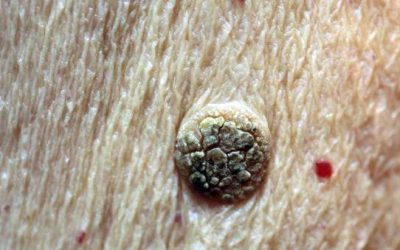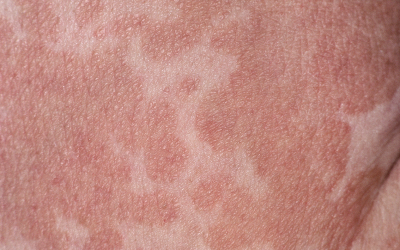Nail psoriasis

- more common in persons over 40 years of age
- more typical for men
- more likely if you have psoriasis or have relatives with it (more than 50 percent of people with psoriasis also have psoriasis of the nails)
- psoriatic arthritis is often present at the same time (even over 80 percent of patients)


In case of nail psoriasis, nail lesions characteristic of the disease appear:
- changes in the color of the skin under the nail (also called oil spots) – yellow, red, pink or brown spots may appear
- damage to the nail plate – depressions of various depths
- horizontal lines may appear on the nail plate
- nails can become very thin and begin to break, split, crumble
- the nail may thicken due to keratin build-up under the nail
Possible symptoms:
- feeling of stretching
- soreness
- a general feeling of discomfort in and around the nail
Diagnostics
The patient’s survey and examination data are usually sufficient to establish the diagnosis. If the patient has psoriasis, the Psoriasis Severity Index (PASI) may be determined together. If there is a suspicion that a fungal nail infection may have contributed to the patient, a KOH test or microbiological culture test is performed.
Treatment
Based on the disease’s intensity, the doctor customizes a treatment plan for each individual. General advice includes minimizing further injury to affected nails and maintaining short nails for better management.
The treatment might involve a variety of topical applications, oral medications aimed at regulating certain body functions, therapies that use biological mechanisms, and other oral treatments designed to modulate the immune system. Light-based treatments (phototherapy) and laser-based methods are also potential options.
These treatments aim to manage symptoms of nail psoriasis and promote recovery. However, it’s common for the effectiveness to be temporary, as the condition and its symptoms often have a tendency to reappear.

Seborrhoeic keratosis
Seborrhoeic keratosisSeborrhoeic keratosis is a benign skin lesion that is usually brown in colour and intensity, with a coarser...
Soft fibromas (papillomas)
Soft fibromas (papillomas) Soft fibroids (papillomas) are benign, non-infectious, non-contagious skin lesions that are harmless...
Multi-coloured ringworm
Multi-coloured ringworm Multi-coloured ringworm is a skin rash caused by a fungus of the Malassezia species, called...




